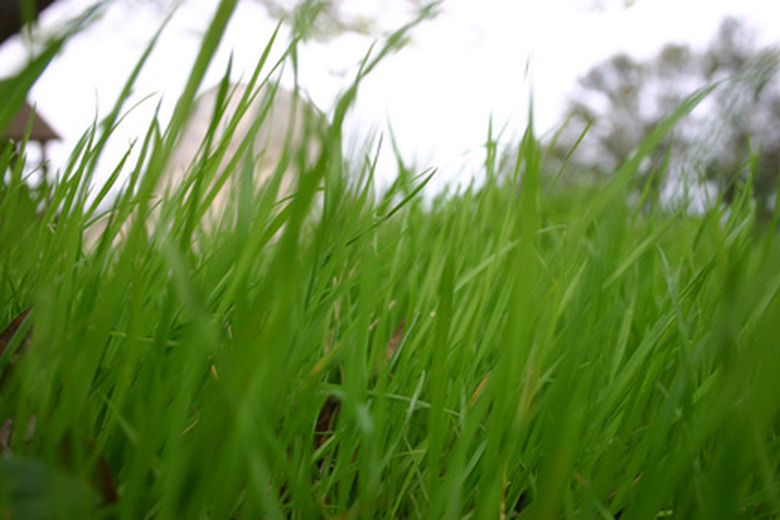How To Increase Grass Density
Lawns require care and maintenance to stay flush and full. There are a lot of factors that can affect lawn density. Lawn moss can cause grass to suffocate and die. Grass thatch (dead grass left from mowing) can cause a lawn to dry up, lose oxygen and die in patches. Aerating the lawn, dethatching and fertilizing properly will help your lawn breathe, ensure it can receive nutrients and help new grass to grow.
Improving your lawn.
Step 1
Mow your lawn so that it is short, about 1 inch high, so that thatch is easier to see and remove.
Step 2
Run a dethatching rake throughout areas of the lawn where dirt is hard to see between the blades. Run the rake at a slight angle to break up the thatch and remove it by hand if necessary.
- Lawns require care and maintenance to stay flush and full.
- Grass thatch (dead grass left from mowing) can cause a lawn to dry up, lose oxygen and die in patches.
Step 3
Water the soil two days before aeration so that it is moist (not wet).
Step 4
Aerate your lawn using a power-core aeration tool, or with a hand-held aerator by pushing it down into the soil, and removing plugs from the dirt. This helps the soil breath and expand by freeing compacted dirt. Run the aerator in two directions across the lawn for best results.
Step 5
Apply a slow release fertilizer to your lawn in the spring to promote grass growth. Apply 1 pound of nitrogen per 1,000 square feet of lawn. Another application of fertilizer should be done in June or July.
- Water the soil two days before aeration so that it is moist (not wet).
- Apply a slow release fertilizer to your lawn in the spring to promote grass growth.
Grass Be Cut?
Grass needs mowing most during the growing season. For warm-season grasses, this is the summer; cool-season grasses grow in the spring and fall instead. These clippings can contain as much as 3 to 4 percent nitrogen and 2.5 to 3.5 percent potassium. The rate of grass growth and desired height of your lawn determine how often you need to mow. It can be tempting to hack away at an overgrown lawn, removing most of the length of grass blades in one session, but this can stress the grass. If you need to cut more than this, mow your lawn on a regular basis until it is at the height you desire — but still, never cut more than one third at a time. Cutting grass too short can lead to weak root systems that are unable to easily absorb water and fertilizer.
- Grass needs mowing most during the growing season.
- It can be tempting to hack away at an overgrown lawn, removing most of the length of grass blades in one session, but this can stress the grass.
Things Needed
- Aerating tool
- Fertilizer
- Dethatching rake
Tip
Aerate the lawn in late August or early September for the best results.
References
- Oregon State University: Controlling Moss in Lawns
- Greenhouse Grower: Understanding Plant Nutrition
- Virginia Cooperative Extension: Aerating Your Lawn
- University of California Agriculture and Natural Resources: How Much, When, and How Often to Mow
- Oregon State University Extension Service: It Is Best to Cut Grass Often and Leave Clippings on Lawn
